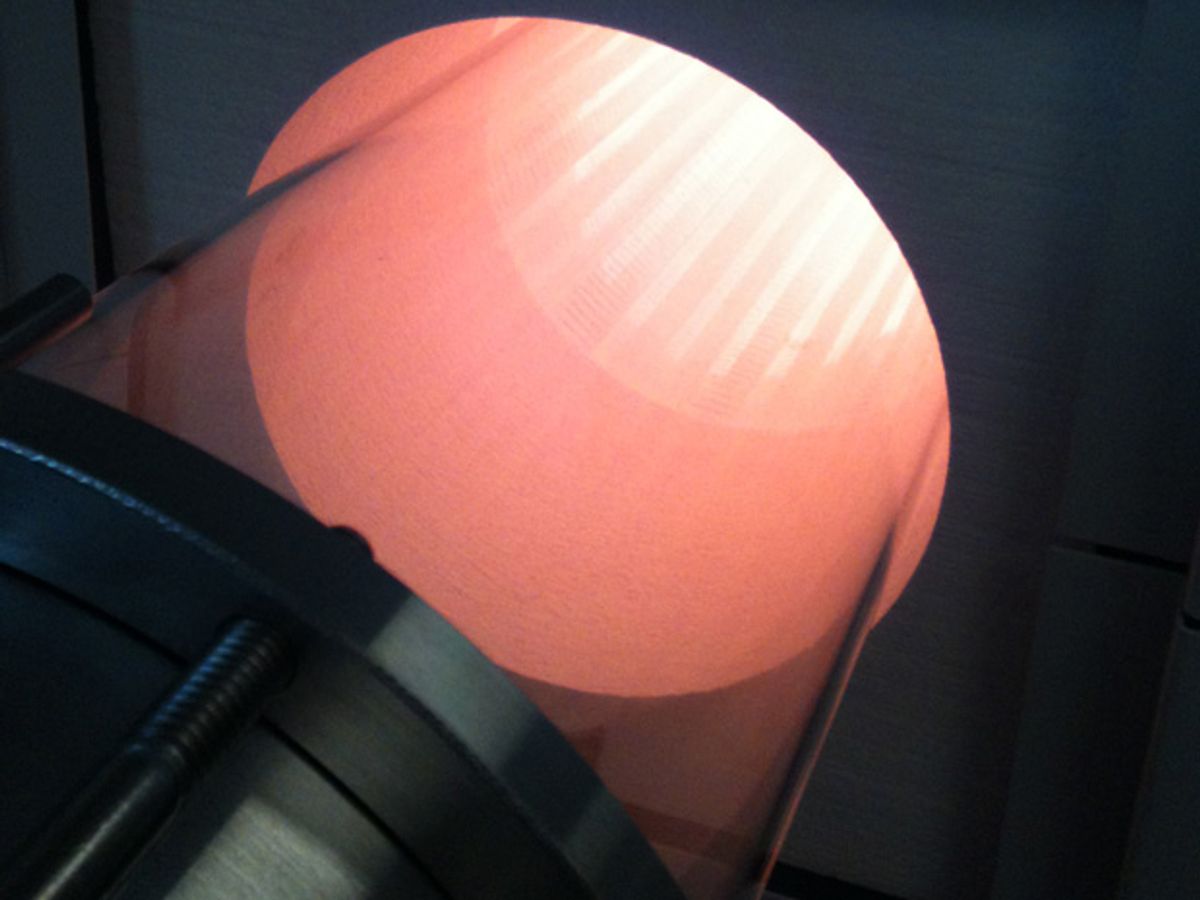Back in September, the National Science Foundation awarded $744,600 to a University of Pennsylvania graphene start-up called Graphene Frontiers. The money is intended to help the young company ramp up a new manufacturing technique for producing graphene in a roll-to-roll process, which could enable large-scale production of high-quality graphene. The company is attempting to be the first to adapt a chemical vapor deposition (CVD) technique, often used to create polycrystalline single layers of graphene, to a roll-to-roll process.
But not all graphene is created equal. While polycrystalline graphene has found use in applications like advanced composites and RF transistors, it's monocrystalline graphene that has the properties worthy of a “wonder material.” Monocrystalline graphene can still only be produced through what are known as mechanical cleavage techniques, in which the graphene is pulled off in single layer flakes from graphite. (One of these became known as the “Scotch Tape” method). These techniques tend to be unscalable for manufacturing large quantities of the material.
Despite this limitation, there are a host of companies like Graphene Frontiers that are already producing graphene. There are several different manufacturing techniques that are suited for producing varying qualities of graphene.
One method is to start with mined graphite and separate out the carbon layers using plasma, mechanical exfoliation, and chemical techniques. This tends to produce lower quality graphene that could eventually be useful in anti-corrosion paints or battery electrodes.
CVD techniques, like Graphene Frontiers employs, produce what is known as synthetic graphenes—synthetic, because they don't start with mined graphite. This graphene is of a higher quality, albeit with some imperfections, and might eventually be a replacement for ITO in solar cells and other applications in which transparent conductors are required. However, there are some experts who believe that only the graphene derived from mechanical cleavage will be suitable for ITO replacement.
The promise of a roll-to-roll process for making synthetic graphene has buoyed hopes that a high-quality graphene could be produced in bulk. If companies like Graphene Frontiers can get their roll-to-roll process up and running by 2015, as they predict, then it could prove to be significant for bringing graphene products to the marketplace.
Nonetheless, even if the company does hit their milestones, they will still face some tough market obstacles. For every application that graphene has been targeted at, there are other materials that are cheaper to produce and have a much longer period of development behind them. In some cases, such as use in transistors, it’s not clear that graphene will ever out-perform established crystalline silicon, because of it lack of band gap.
Making high-quality graphene inexpensively and in bulk is an absolutely necessary first step for the material to ever live up to its promise in commercial applications. However, just showing up for the game is no guarantee that you’re going to win it.
Dexter Johnson is a contributing editor at IEEE Spectrum, with a focus on nanotechnology.





